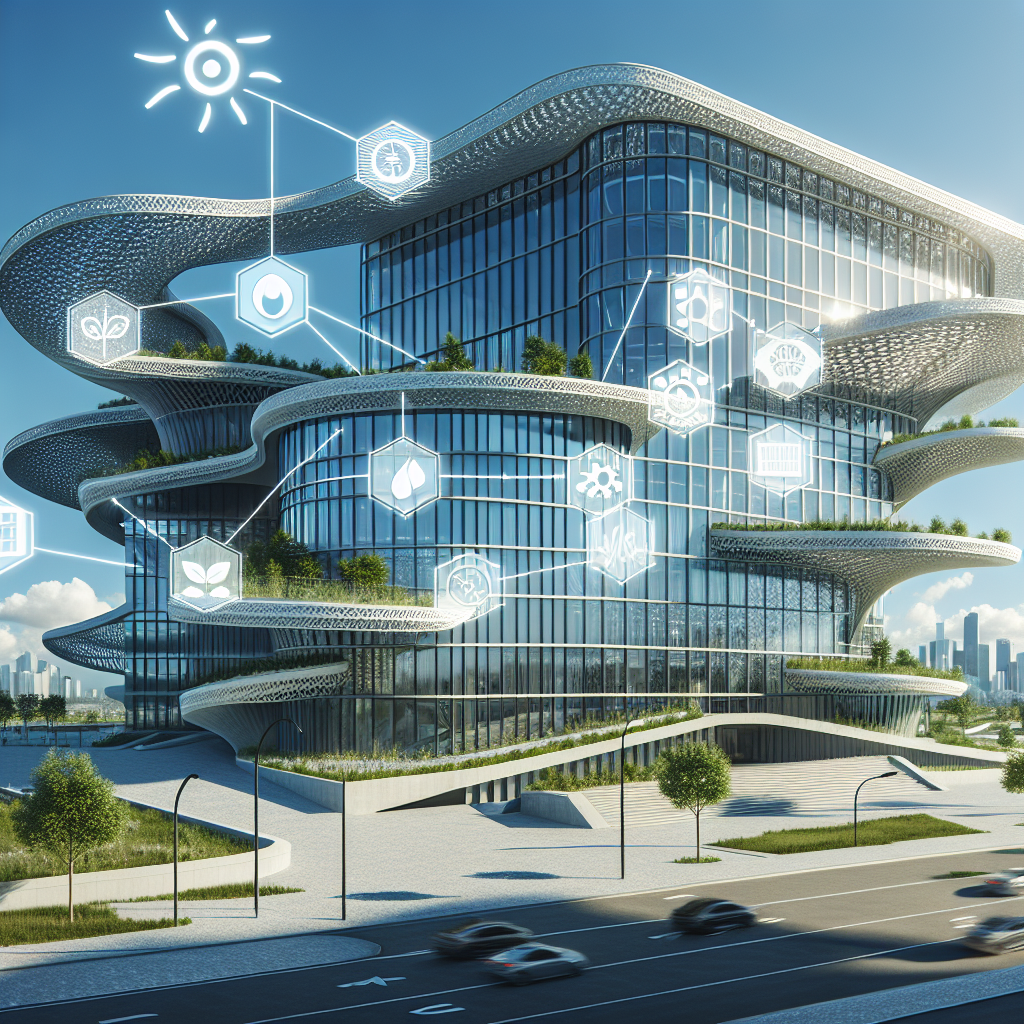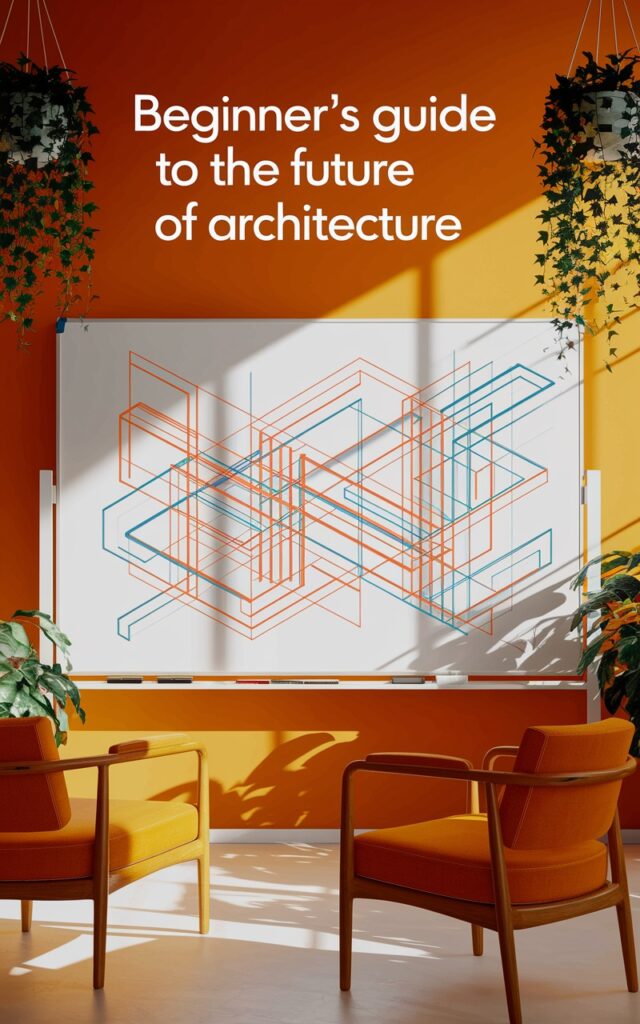In a world where our skylines transform almost overnight, it’s easy to miss the invisible force reshaping not just our buildings but our entire built environment. Every time you marvel at an impossible-looking skyscraper or wonder how a bridge spans what seems unbridgeable, you’re witnessing the quiet revolution of algorithmic design. These mathematical frameworks are silently transforming architecture from a purely human endeavor into a collaborative dance between creative minds and computational power, with parametric design allowing architects to explore thousands of possibilities before breaking ground. The buildings around you aren’t just structures anymore—they’re the physical manifestations of complex calculations optimizing everything from energy efficiency to aesthetic beauty.
*Behind every curved façade and innovative structure lies an algorithm that’s fundamentally changing what’s possible in the world we build.**Where concrete meets code: algorithms are transforming our built environment in ways most have yet to notice—but will soon be unable to ignore.*
Have you ever marveled at a building with seemingly impossible curves, or wondered how modern construction projects finish in half the time they used to take? Behind these architectural and construction marvels lies a quiet revolution that’s reshaping our world brick by digital brick. From the skyscraper outside your office window to the layout of your neighborhood park, algorithmic thinking is fundamentally changing how we design, construct, and experience our built environment.
This isn’t just about fancy buildings or faster construction timelines—it’s about creating spaces that work better for the people who use them. And while you might not be drafting blueprints or programming robots, these changes affect where you live, work, and play in ways both subtle and profound.
The Algorithmic Construction Revolution
Remember when construction meant exclusively hard hats, hammers, and manual labor? Today’s building sites are increasingly populated by drones scanning progress, robots laying bricks, and project managers consulting AI-optimized schedules on tablets. Construction automation is transforming one of humanity’s oldest industries into one of its most innovative.
Algorithms now analyze thousands of variables to optimize everything from material usage to worker scheduling. This isn’t just technology for technology’s sake—it translates into very real benefits:
- Projects completed 20-30% faster than traditional methods
- Significant waste reduction through precise material calculation
- Fewer workplace accidents as algorithms identify potential safety issues
- Lower costs passed on to homebuyers and commercial clients
Consider Boston’s Danton Tower, where algorithm-managed construction sequencing reduced completion time by 14 months while cutting material waste by nearly 30%. This isn’t an anomaly—it’s becoming the new standard.
Parametric Design: The Digital DNA of Modern Architecture
At the heart of this transformation lies parametric design—a revolutionary approach that uses algorithms to explore design possibilities based on relationships between elements rather than fixed dimensions. Think of it as the difference between drawing a static picture versus creating a mathematical formula that can generate countless variations of that picture by adjusting different variables.
In a parametric workflow, architects and engineers define relationships between building components and set constraints, then allow algorithms to explore thousands of possible solutions that humans alone could never calculate. This approach enables:
- Buildings that respond more intelligently to environmental conditions
- Structures optimized for both strength and material efficiency
- Designs that would be impossible to conceptualize using traditional methods
The swooping facades of Zaha Hadid’s buildings or the intricate latticework of modern stadiums aren’t just aesthetic choices—they’re the physical manifestation of algorithmic problem-solving expressed through architecture.
AI + Design: The New Creative Partnership
The pairing of AI + design is redefining what’s possible in the built environment. Far from replacing human creativity, algorithmic tools are amplifying it, handling the computational heavy lifting so designers can focus on innovation and human experience.
Imagine being an architect faced with designing a hospital. Beyond aesthetics, you need to consider:
- How to minimize nurse walking distances between patient rooms
- Optimizing natural light without creating glare or heat issues
- Creating efficient emergency evacuation routes
- Balancing privacy with visibility for patient safety
Traditional approaches relied on experience and best practices. Today’s AI-assisted design can simulate thousands of layout options, predicting how each would perform against these criteria. The result? Hospitals where nurses walk fewer miles per shift, patients recover faster thanks to better environmental design, and resources flow more efficiently throughout the building.
From Intuition to Simulation
For centuries, architects and builders relied primarily on intuition, experience, and rules of thumb. Today, generative design algorithms can simulate how buildings will perform over decades—predicting energy usage, maintenance needs, and even how people will move through spaces.
This shift from intuition to simulation is particularly powerful for sustainability through optimization. When algorithms can predict a building’s lifetime environmental impact with remarkable accuracy, designers can make informed choices about everything from window placement to insulation thickness, potentially reducing a structure’s carbon footprint by 30% or more before construction even begins.
Smart Cities: Algorithms at Urban Scale
The algorithmic revolution extends beyond individual buildings to reshaping entire urban environments. Smart cities leverage data and algorithms to create more livable, efficient, and resilient urban spaces.
Consider Toronto’s Quayside development, where algorithms analyze pedestrian flow, sunlight patterns, and transportation needs to create dynamic neighborhoods that adapt to residents’ needs. Or Singapore’s predictive maintenance systems that identify infrastructure issues before they become problems.
The Human Experience in Algorithmic Cities
Despite all this technology, the most successful algorithmic urban planning remains centered on human experience. Modern algorithmic approaches can:
- Model how neighborhood designs impact community interaction
- Predict transportation needs based on changing population patterns
- Optimize green space placement to maximize accessibility and use
- Balance density with quality of life metrics
Barcelona’s “superblocks” initiative used algorithmic analysis to reconfigure traffic patterns and reclaim street space for pedestrians. The result wasn’t just more efficient traffic flow but measurable improvements in community connection, air quality, and local business performance.
Time and Cost Efficiency: The Business Case for Algorithmic Building
Beyond the technological wonder, there’s a compelling business case for algorithmic construction approaches. Time and cost efficiency gains from algorithmic building are transforming project economics:
- Reduced design time through automated testing of multiple options
- More accurate cost estimation reducing budget overruns
- Shorter construction schedules decreasing financing costs
- Lower operational costs throughout building lifecycles
The Hudson Yards development in New York utilized algorithmic construction planning to coordinate the movement of materials and workers across a massively complex site built above active railway tracks. This approach cut years off the construction schedule and saved hundreds of millions in costs.
Why It Matters to You
You might wonder why algorithmic construction should matter to someone who isn’t in the building industry. Consider this:
- More affordable housing through reduced construction costs
- Healthier homes designed with algorithmic analysis of air quality and natural light
- Workplaces that enhance productivity and wellbeing
- More resilient communities designed to withstand climate change impacts
Whether you’re buying a home, working in an office, or simply walking through your city, the algorithmic revolution in construction is reshaping your daily experience—often in ways you might not immediately notice but will ultimately impact your quality of life.
The Challenges Ahead
This technological transformation isn’t without challenges. Algorithmic design and construction raise important questions about:
- Data privacy in buildings that increasingly monitor occupant behavior
- Potential job displacement in construction trades
- The risk of algorithmic bias reinforcing existing inequalities in urban development
- Maintaining human control over increasingly automated systems
Addressing these concerns requires thoughtful engagement not just from industry professionals but from citizens who will live and work in these algorithmically-influenced environments.
The Future is Already Here
The algorithmic transformation of our built environment isn’t some distant future—it’s happening now, block by block, building by building. From the parametrically designed facade that makes your office more energy-efficient to the algorithmically optimized traffic flow that shortened your commute, these technologies are already shaping your daily experience.
As we look ahead, the convergence of algorithmic design, construction automation, and smart city planning promises built environments that are more sustainable, more efficient, and more responsive to human needs. The buildings of tomorrow won’t just be static structures but dynamic systems that learn and adapt.
The question isn’t whether algorithms will change how we build—they already are. The real question is how we’ll harness this technology to create not just more efficient buildings, but more humane, sustainable, and equitable places for everyone.Final Thoughts: Build Your World with Intention
Every space—whether a ceiling that frames your aspirations, a wall that shelters your growth, or a facade that reflects your authenticity—holds the power to shape your journey. By embracing design as a tool for self-expression, you transform environments into reflections of purpose and possibility.
Now, take action: Redefine your surroundings with intention. Share how you’ve turned obstacles into opportunities in the comments, or sketch a vision for a space that mirrors your growth. The world around you is a canvas—paint it with courage, creativity, and the unwavering belief that every detail matters. What legacy will your design leave?




